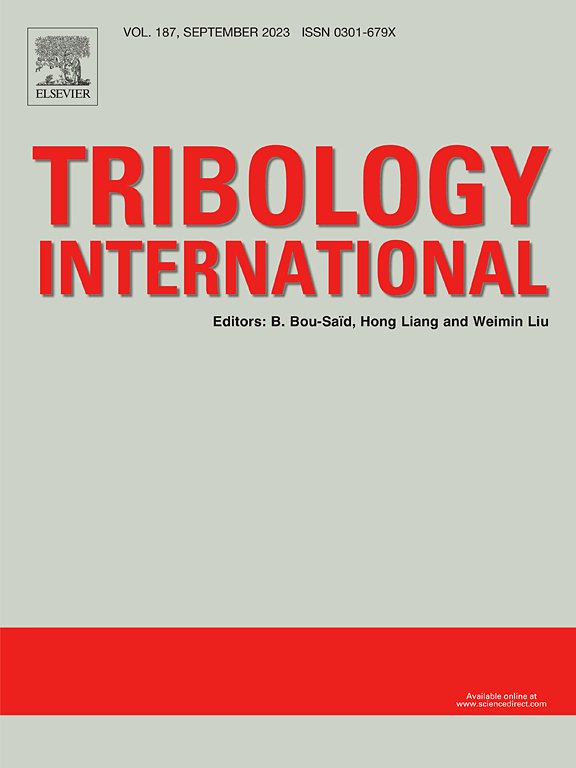Atomic-scale investigation of Ti element regulating the mechanical and tribological performance of FeCrNi MEA
IF 6.1
1区 工程技术
Q1 ENGINEERING, MECHANICAL
引用次数: 0
Abstract
Molecular dynamics simulation was conducted to investigate the deformation mechanisms and enhance the mechanical and tribological properties of FeCrNiTix MEAs (x = 0.1–0.3). The results show that titanium element contributes to forming dispersed phases, effectively improving the alloy strength and stiffness. At lower titanium concentrations, smaller dispersed phases can cause localized stress concentrations, raising fracture risk during tensile loading. Increasing titanium content promotes a fine-grained microstructure, suppressing dislocation slip and enhancing interface stability. Additionally, titanium incorporation reduces the stacking fault energy, facilitating dislocation network formation and increasing stacking fault roughness. When polycrystalline grain boundaries are damaged, regeneration and migration occur. In contrast, despite the high toughness of twin boundaries, bending or migration does not take place when damage occurs. This research explores the mechanical and tribological properties of FeCrNi alloy, to promote the application and development of these alloys in manufacturing processes.
求助全文
约1分钟内获得全文
求助全文
来源期刊

Tribology International
工程技术-工程:机械
CiteScore
10.10
自引率
16.10%
发文量
627
审稿时长
35 days
期刊介绍:
Tribology is the science of rubbing surfaces and contributes to every facet of our everyday life, from live cell friction to engine lubrication and seismology. As such tribology is truly multidisciplinary and this extraordinary breadth of scientific interest is reflected in the scope of Tribology International.
Tribology International seeks to publish original research papers of the highest scientific quality to provide an archival resource for scientists from all backgrounds. Written contributions are invited reporting experimental and modelling studies both in established areas of tribology and emerging fields. Scientific topics include the physics or chemistry of tribo-surfaces, bio-tribology, surface engineering and materials, contact mechanics, nano-tribology, lubricants and hydrodynamic lubrication.
 求助内容:
求助内容: 应助结果提醒方式:
应助结果提醒方式:


